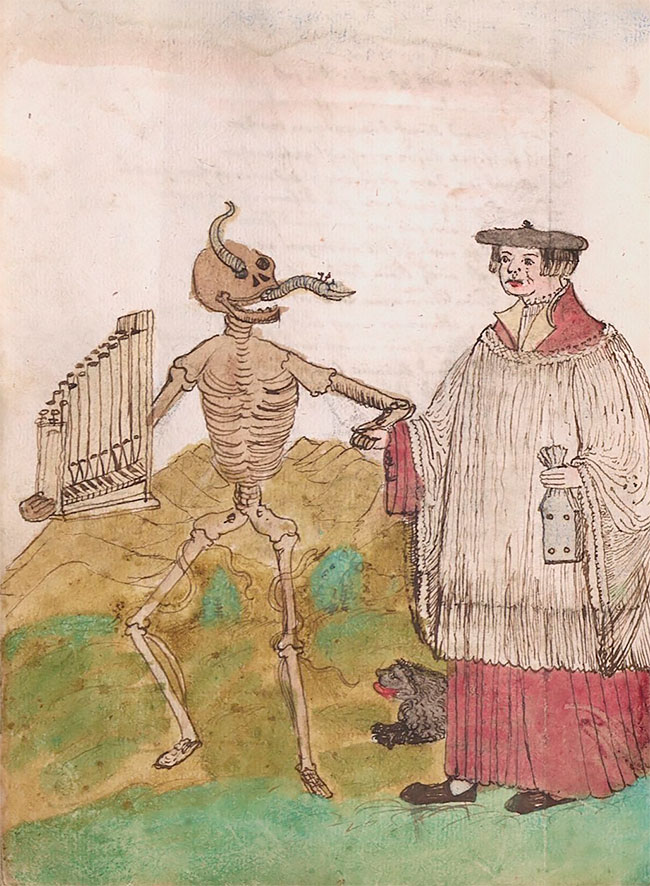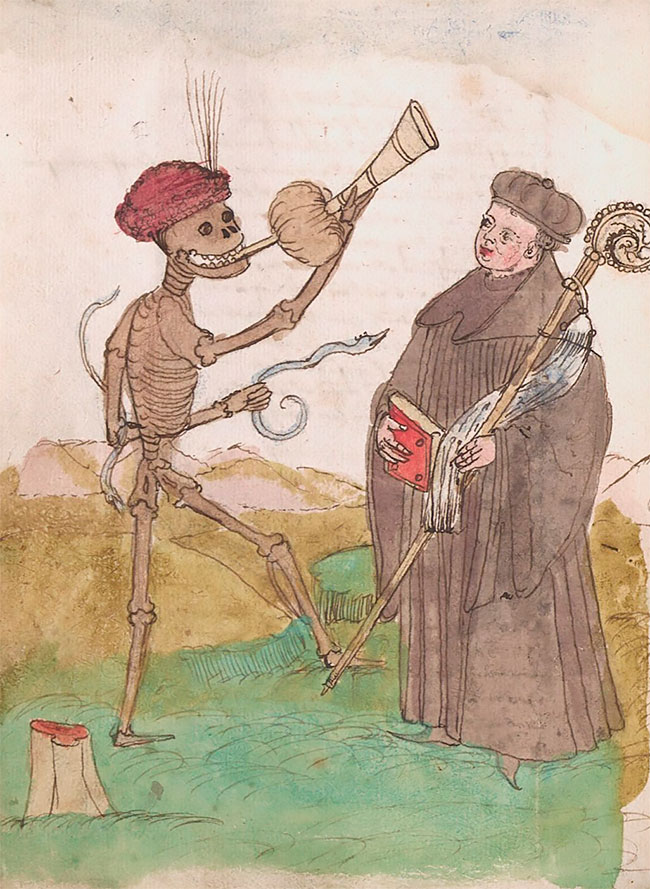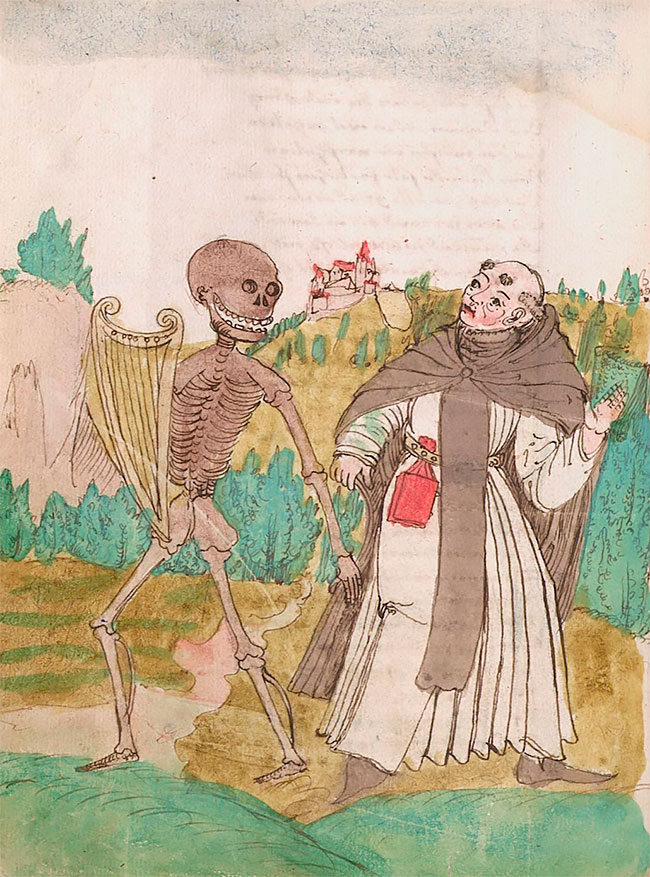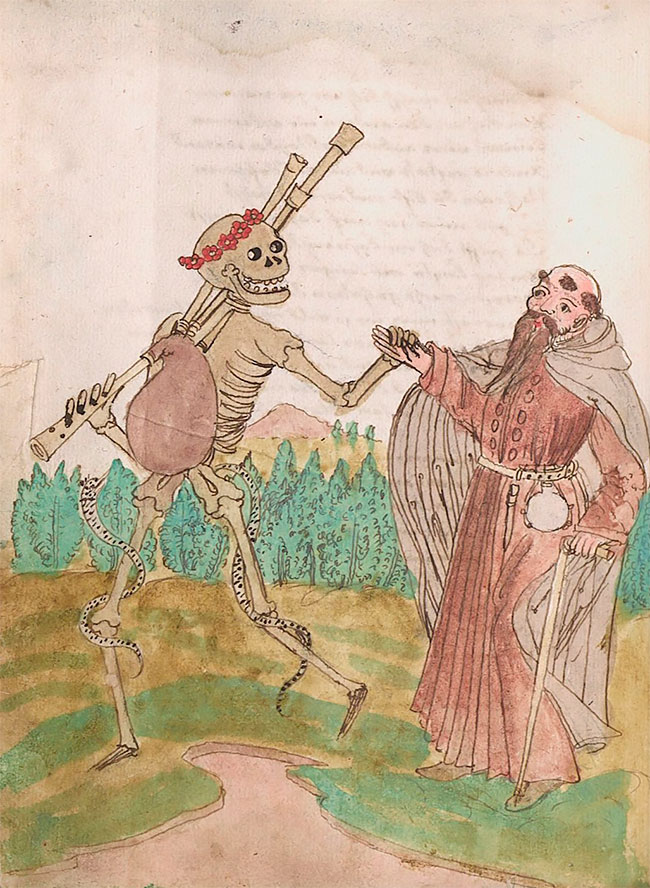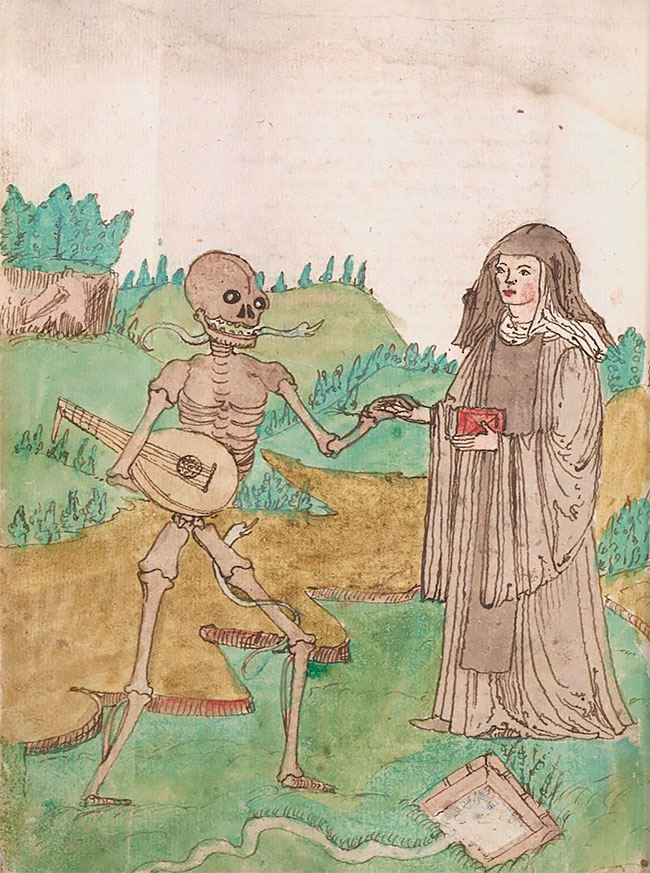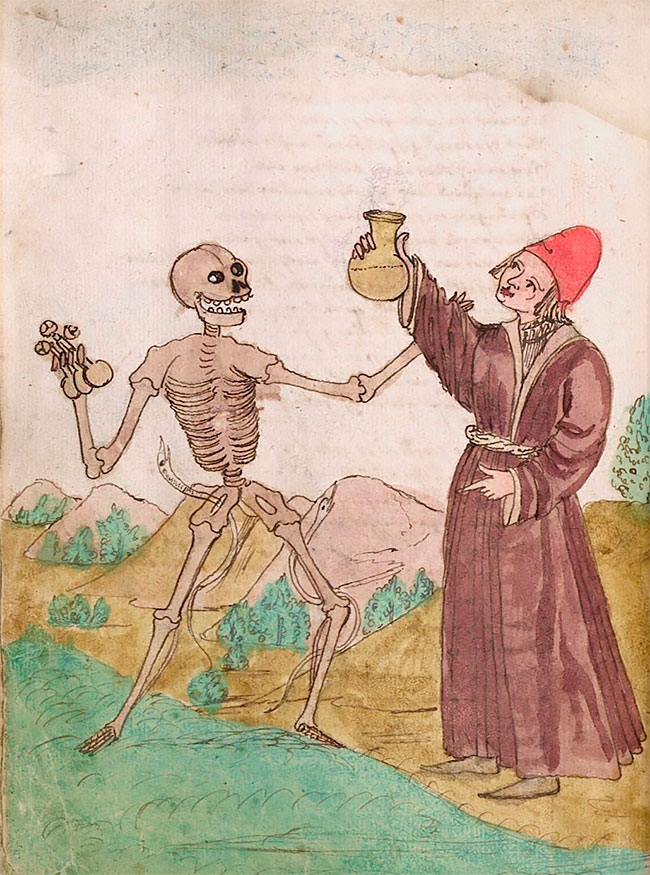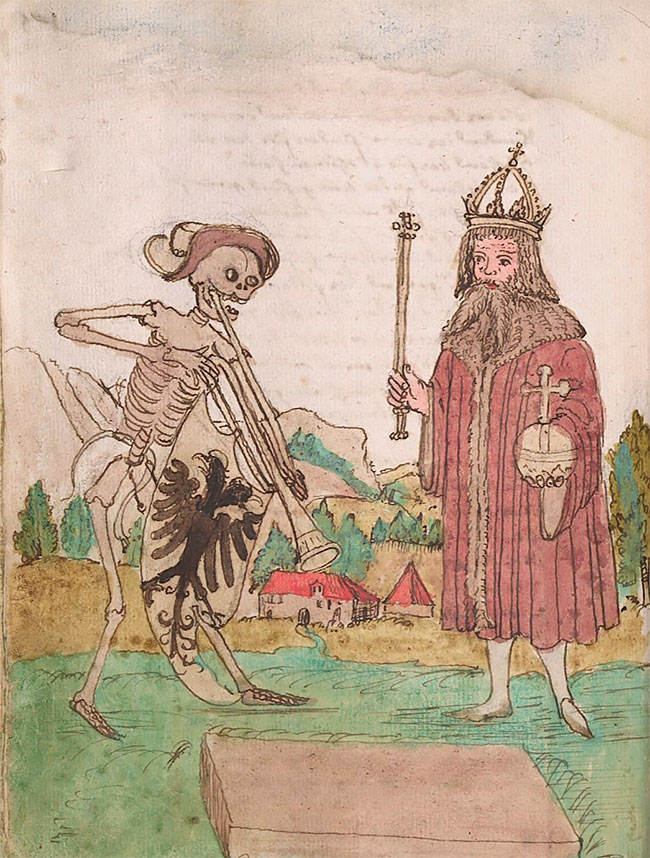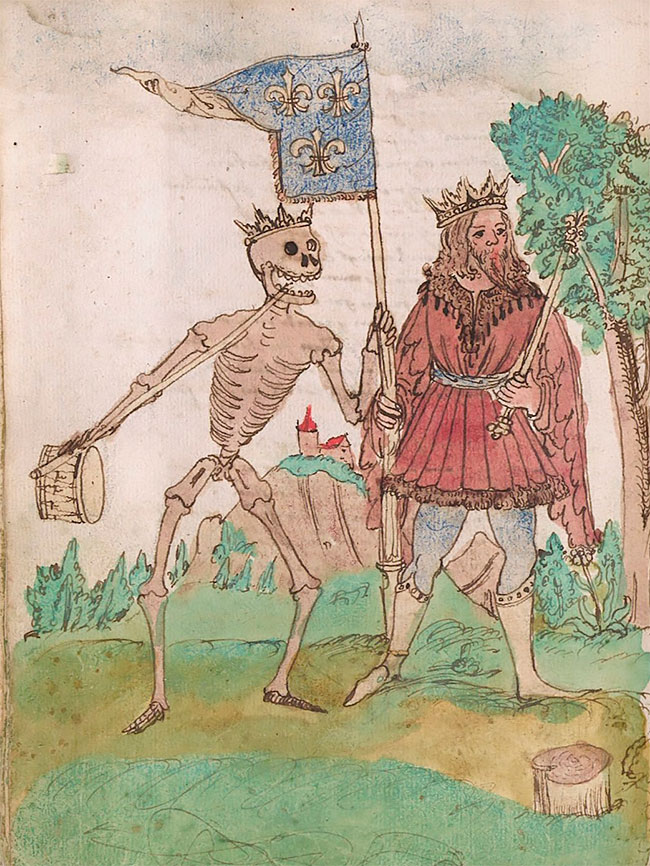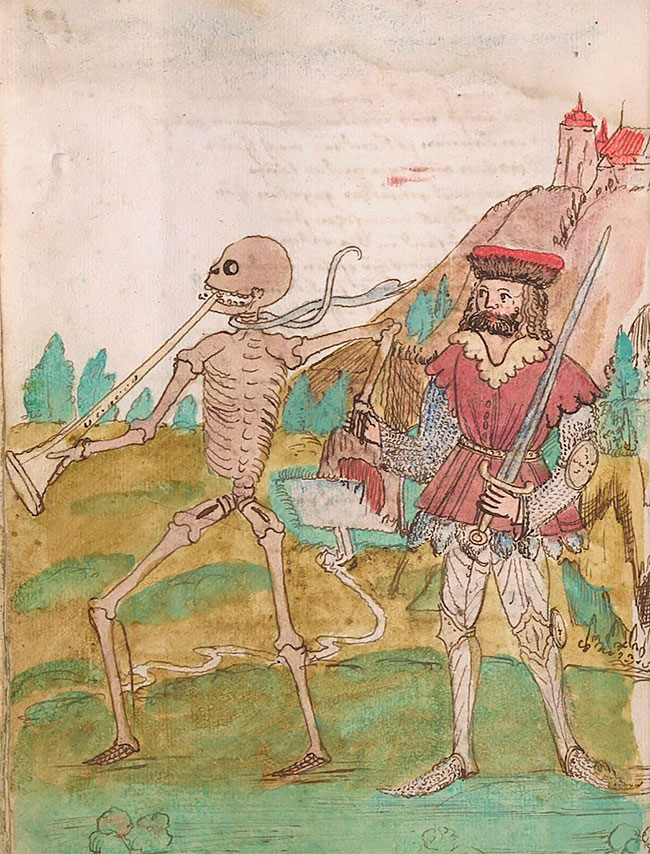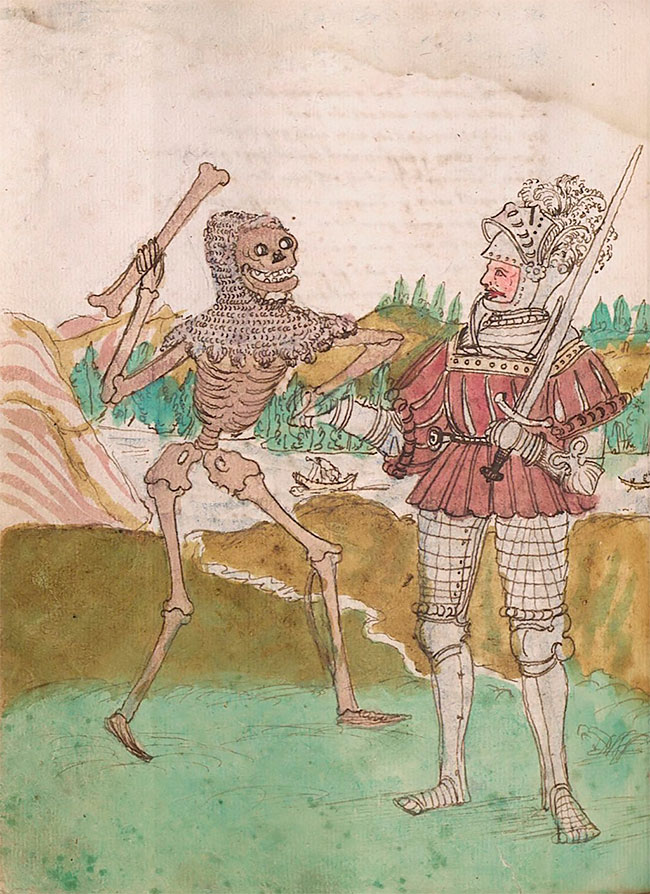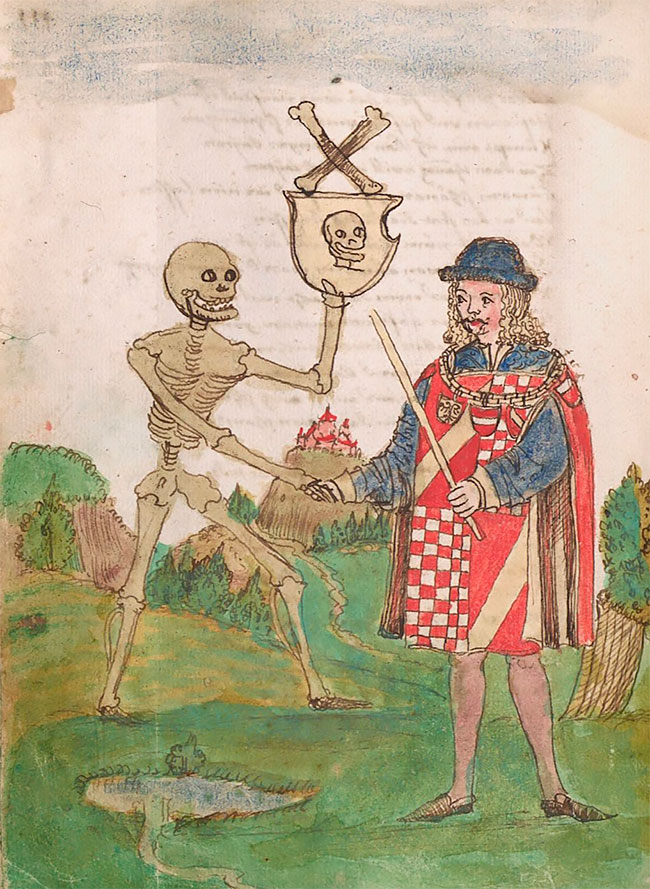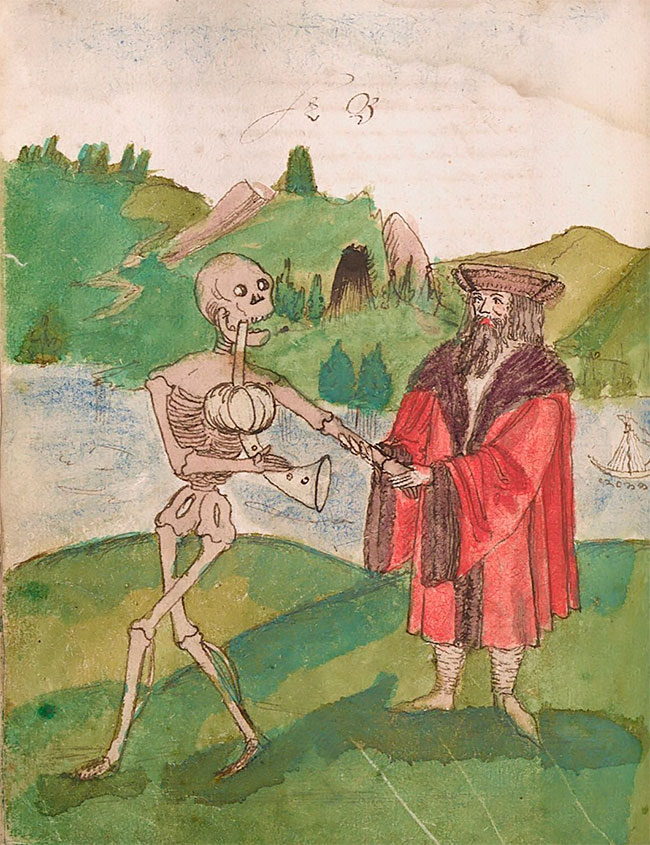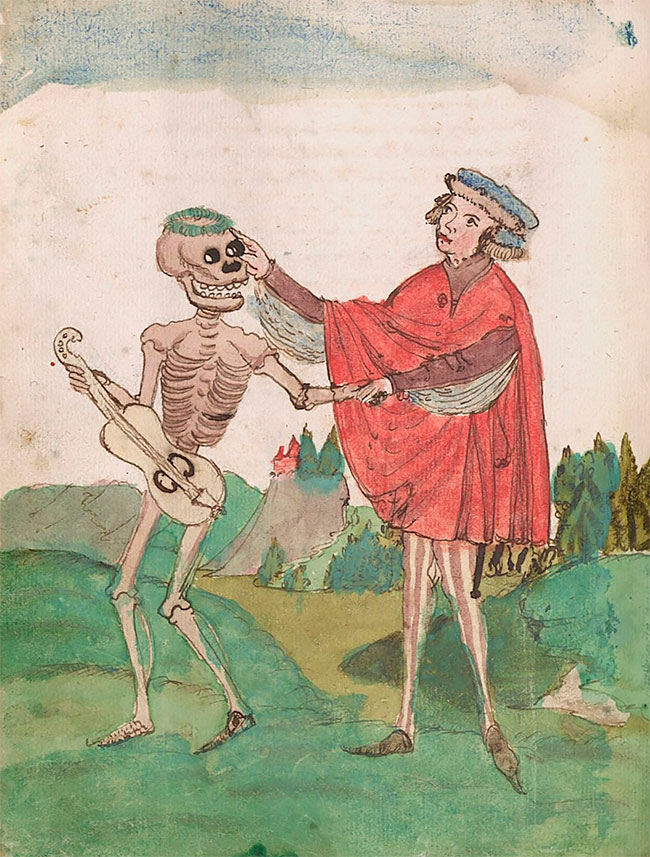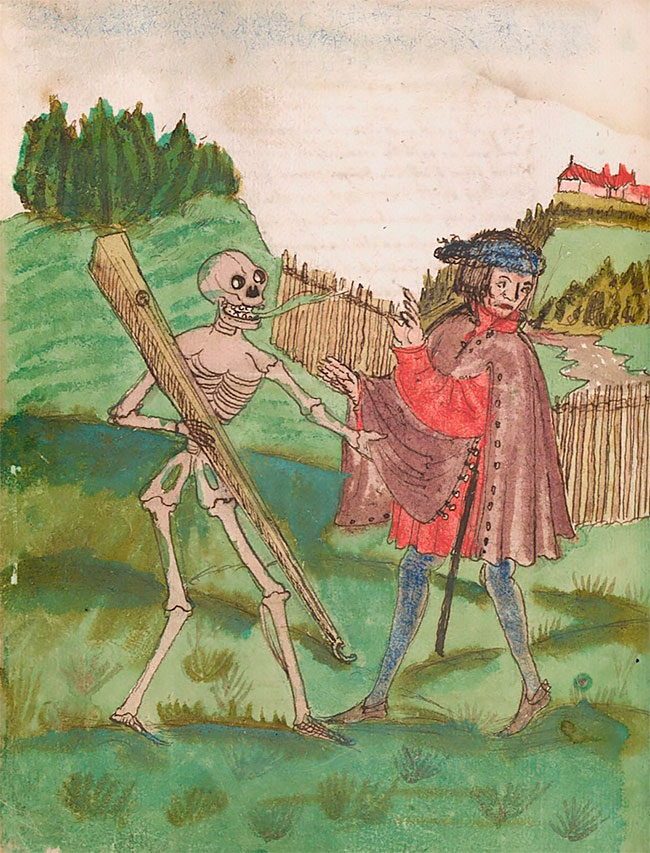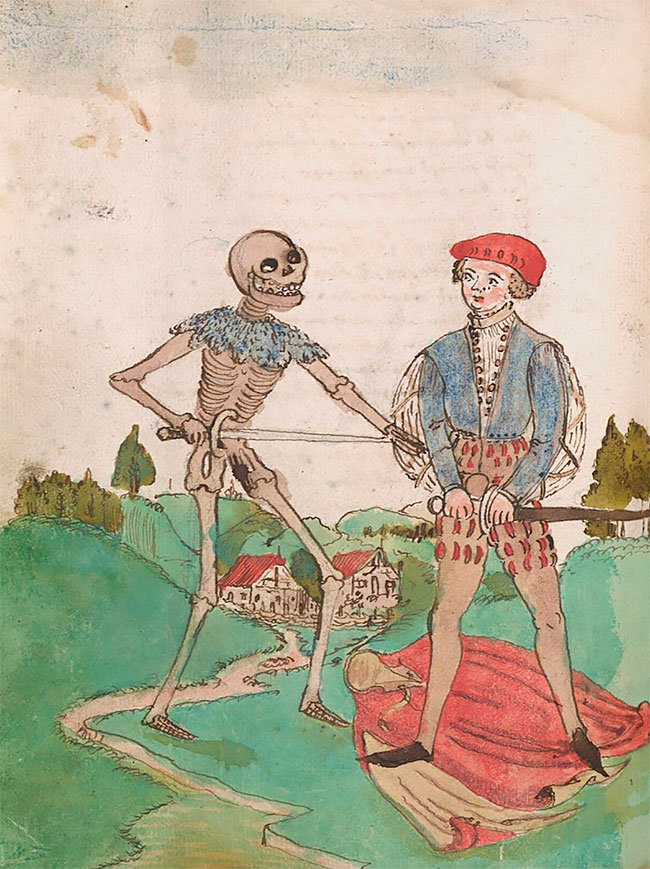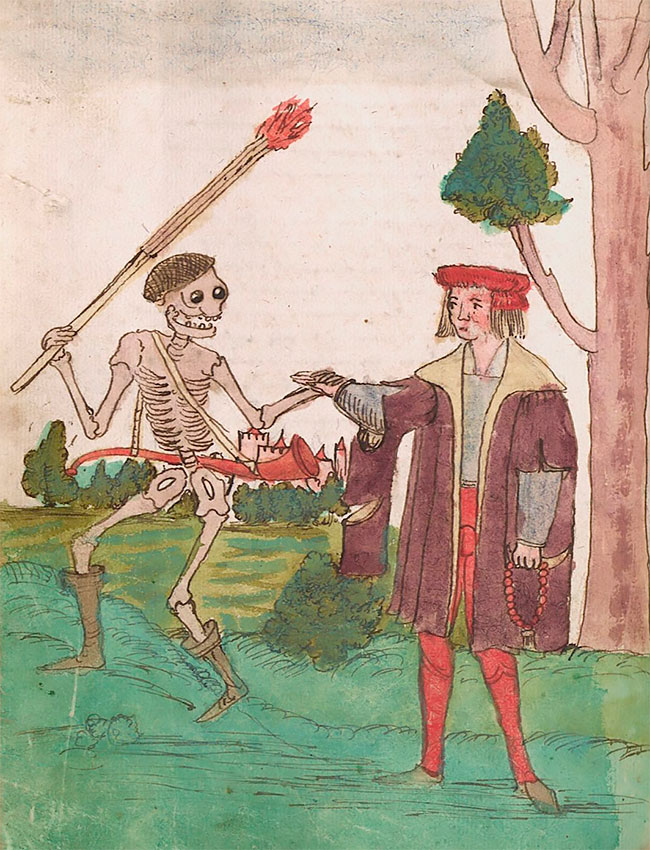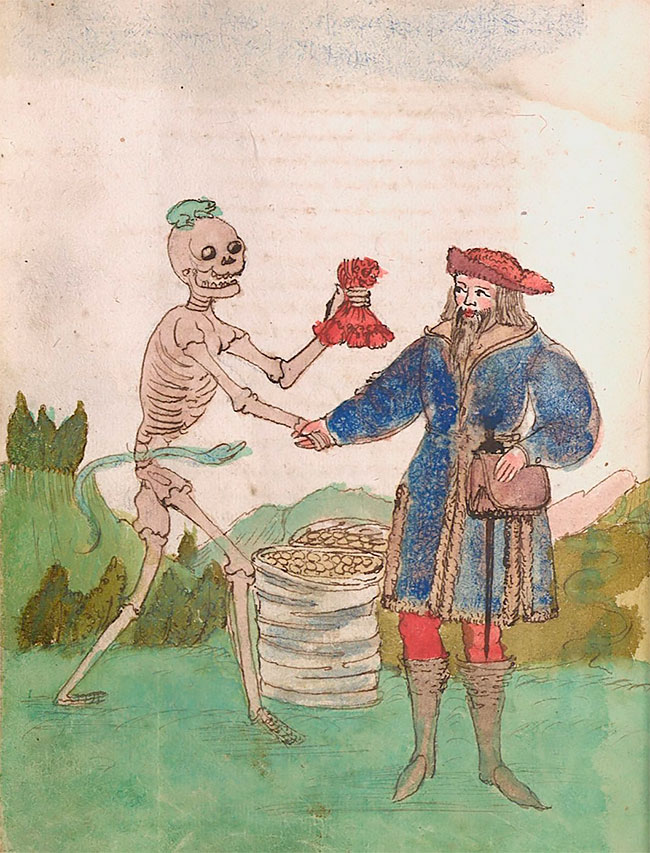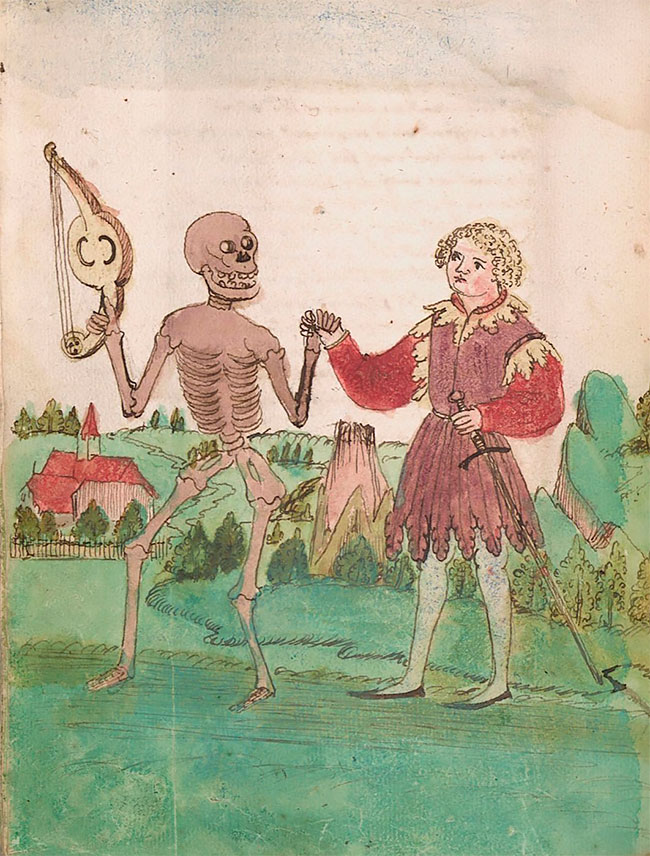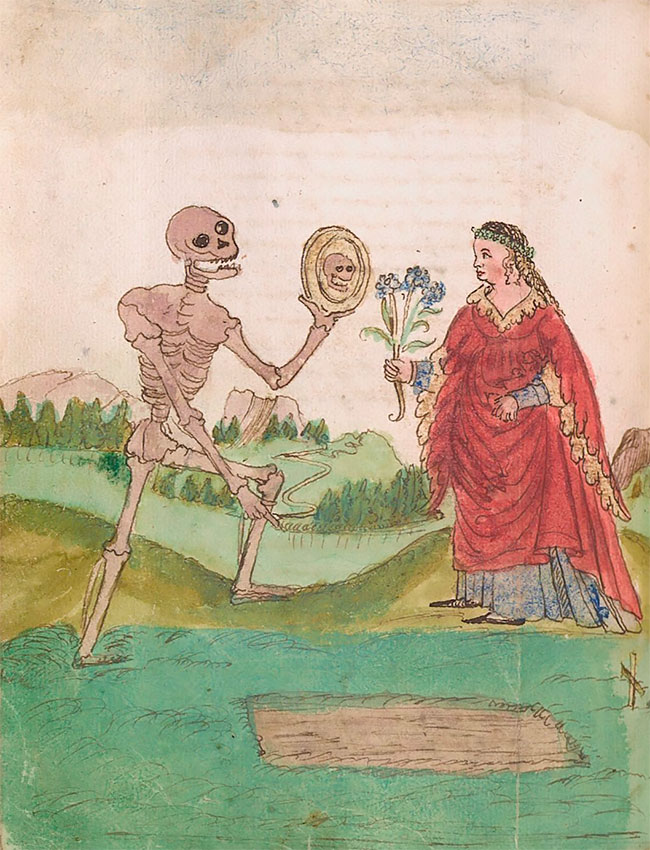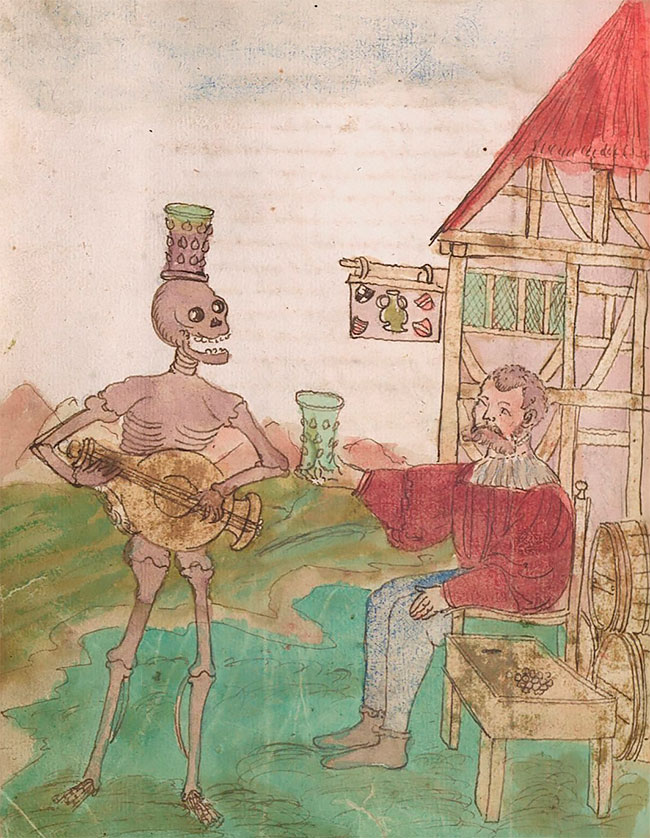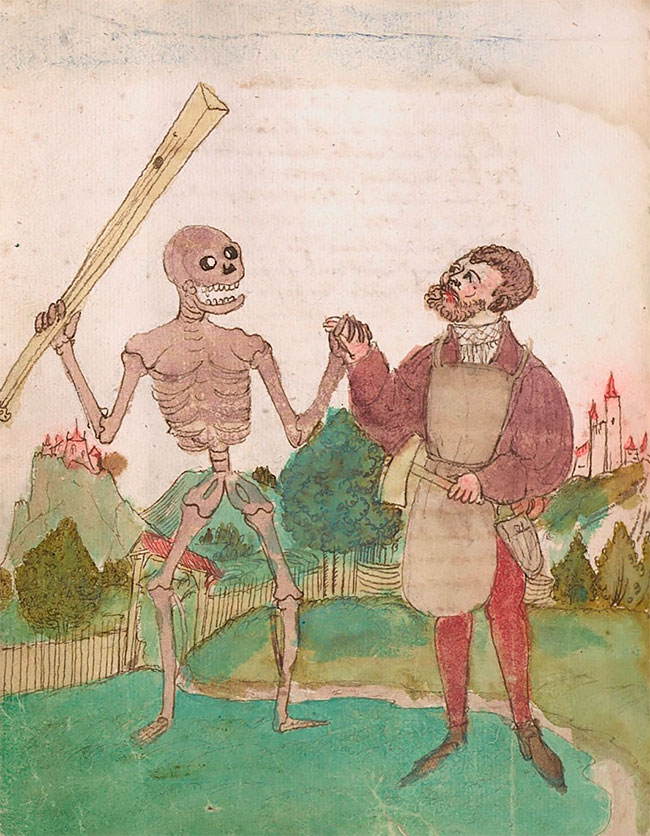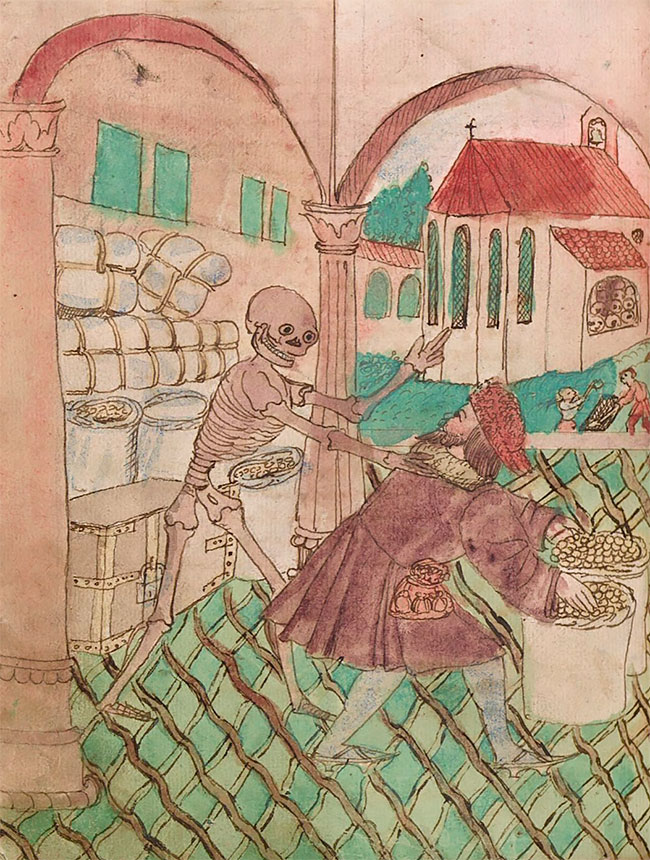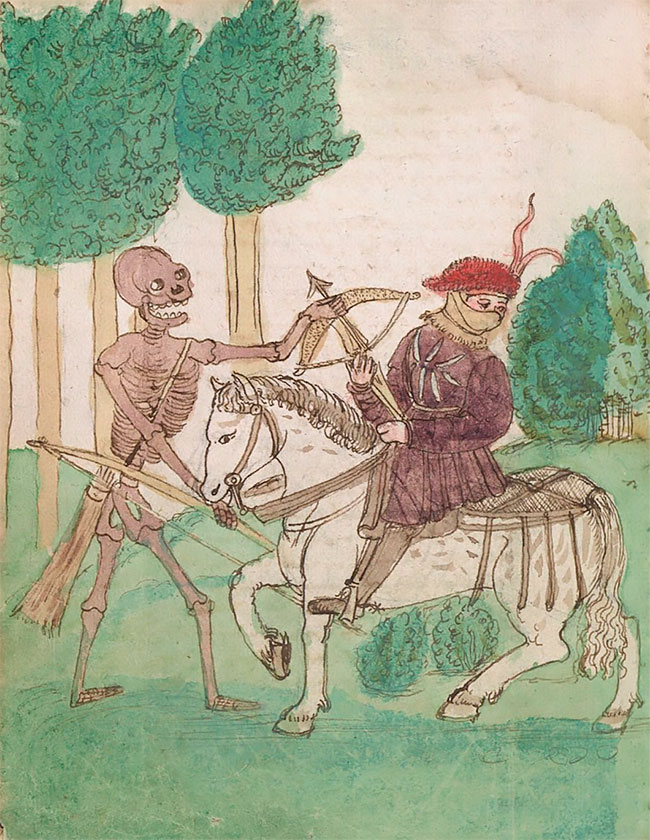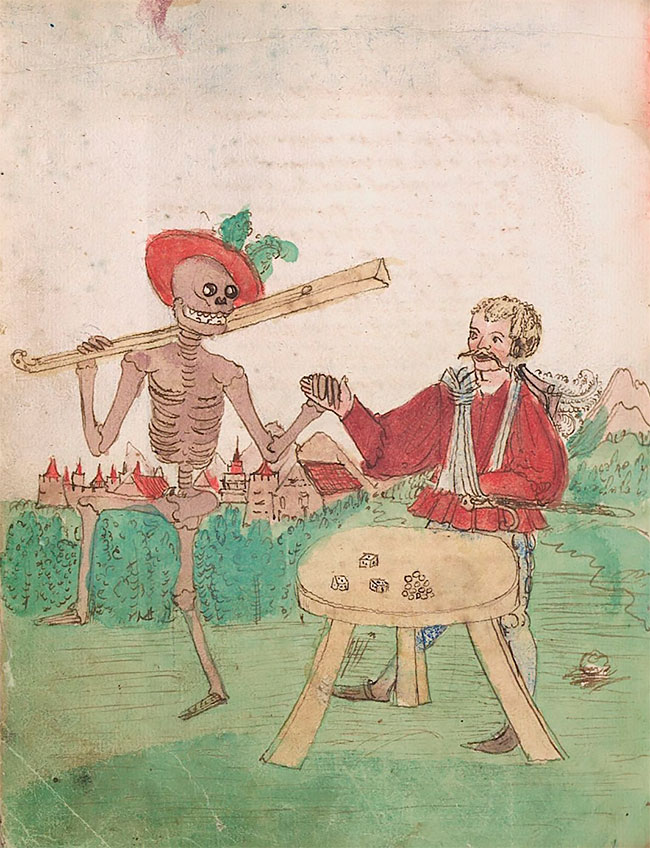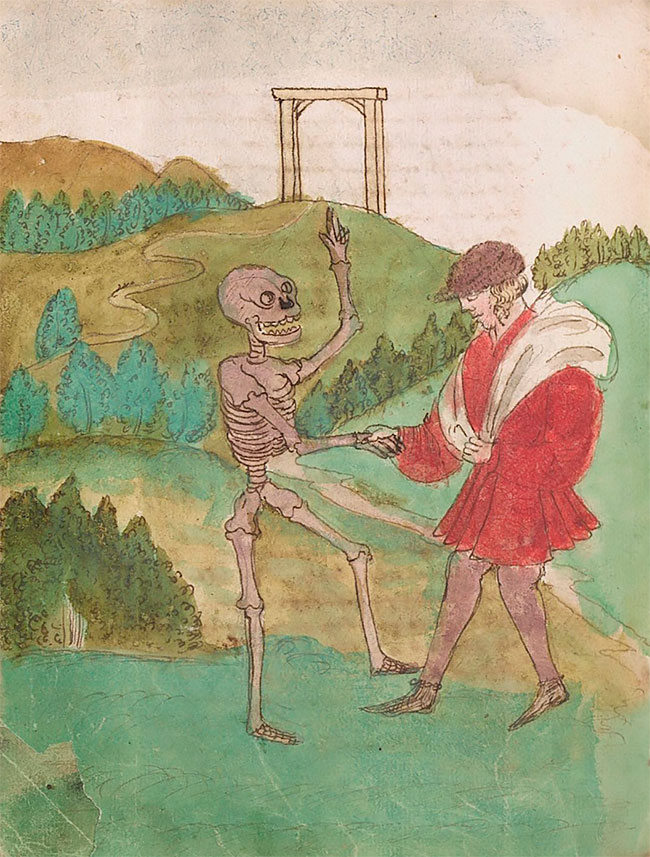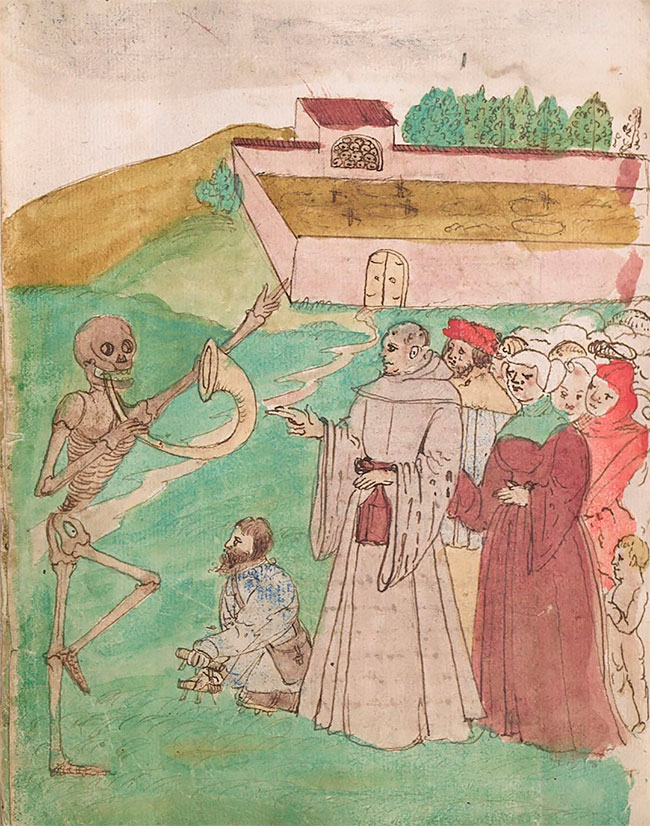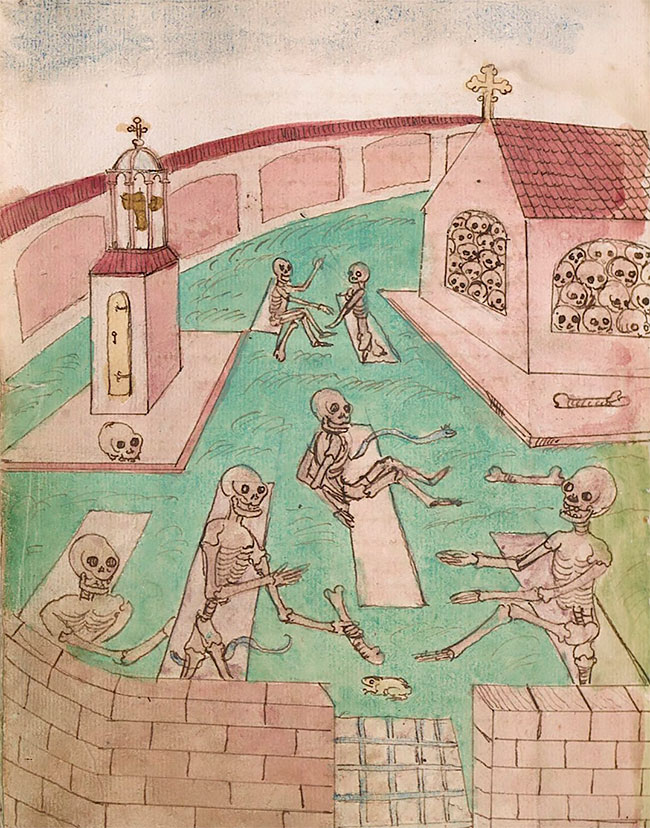Wilhelm Werner Von Zimmer’s “Dance Of Death” From 1540
In the Late Middle Ages, there were illustrated books called Danse Macabre or the Dance of Death which were used to focus the mind on life’s short stretch.

These books were heavily illustrated with pictures of Death or a gnarly skeleton fresh from the grave a-coming-up to claim both high and low. The peasant and the King were equal before Death, neither could escape its cold bony grasp. The Princess and the child were not spared. Understandable when the average life expectancy was between 30 and 40-years-of-age in the 1500s. The rich and privileged may have lived slightly longer but the majority died before forty.
h/t: flashbak

The earliest recorded example of a Danse Macabre was the now lost mural on the south wall of the cemetery of the Holy Innocents in Paris, which was painted around 1424. Such murals became common in churches and in artworks hung on stately walls.

Hans Holbein’s woodcuts from 1526 are the most famous. His carved intricate designs were published in book form and led to innumerous unauthorised editions and cards being issued which spread throughout Europe and brought the Dance of Death to a much greater audience.

Wilhelm Werner von Zimmer (1485-1575) was a German collector of curiosities, an historian and a lawyer, who wrote and illustrated his own books. His most interesting literary work was The Book of Transience which contained contemplations on the meaning of life alongside his pen and wash illustrations of Death leading man on his merrie dance. Though his skeletons may not be anatomically correct, Von Zimmer’s drawings of Death do have a liveliness and joy greater than the poor souls they’re dragging off to Eternal Rest.



